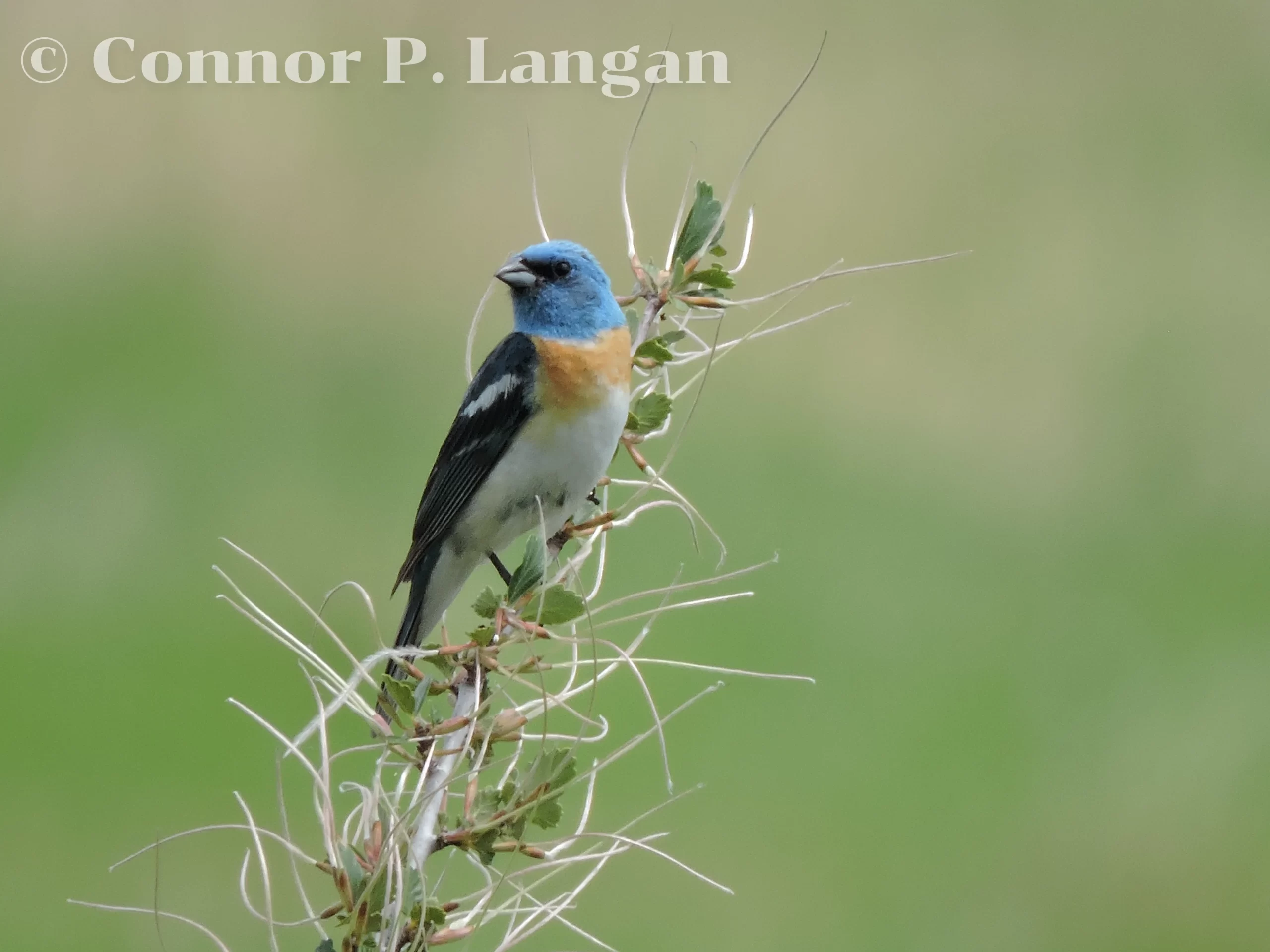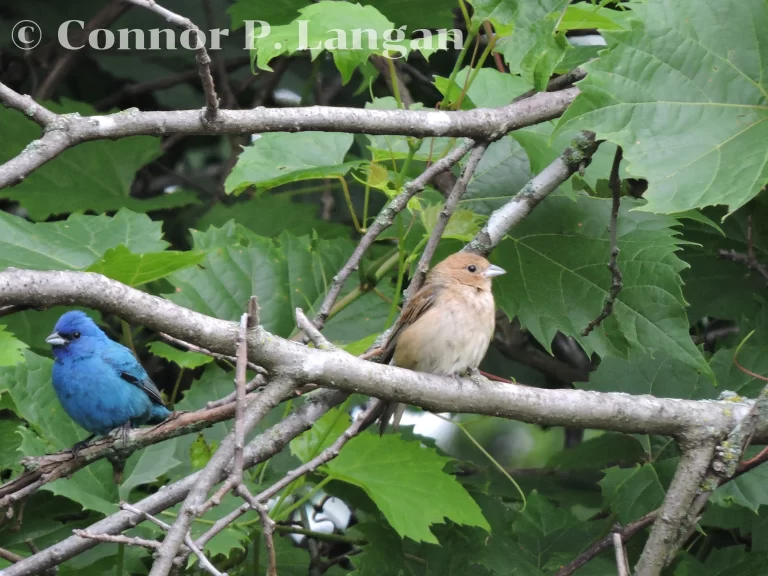Description
Lazuli Buntings are songbirds with chunky profiles and conical beaks.
These birds measure anywhere from 5.1 to 5.9 inches long, while they around 0.5 ounces.
Breeding male Lazuli Buntings are a gorgeous combination of colors. For instance, these birds have sky-blue heads and orange breasts. Males also have blue backs and tails, while their stomachs are white. Males have prominent white stripes near their shoulders.
Females have a simple coloration, as these birds are light brown-green overall. These birds have a buffy-colored stripe on their wings.
Immature male Lazuli Buntings will look much like the females.
Adult males in nonbreeding plumage have much of their blue coloration replaced by brown.
Behavior
Males perch conspicuously when singing to advertise territory. Otherwise, these birds tend to keep a low profile as they often stay concealed in shrubs and other vegetation.
Diet
Lazuli Buntings seem to consume more insects than other bunting species. In addition to eating insects, Lazuli Buntings consume a variety of seeds and berries.
Habitat
These buntings thrive in areas with a fairly young community of vegetation. Early successional areas such as thickets, fallow fields, and young tracts of forest provide terrific habitats for these birds. Lazuli Buntings also enjoy nesting along canyons and hills with lots of shrubs.
Look for Lazuli Buntings in parks and other shrubby, early successional habitats.

Range
Lazuli Buntings breed west of the Great Plains in the United States and Canada. These birds don’t tend to breed in many areas of the American Southwest, and their range in Canada is limited.
In the nonbreeding season, these birds spend their winters in western Mexico.
Breeding
Male Lazuli Buntings sing persistently to establish a territory. Males will aggressively defend their domain from other male Lazuli Buntings. Though males are highly invested in their territories, they do not help females with any nesting duties.
Females choose a nesting location in a shrub and place their nest within a few feet of the ground. Females then commence nest construction – a process that takes as long as one week.
Lazuli Bunting nests are made of leaves, tree bark, and grasses. Female Lazuli Buntings commonly use spider webs to hold the components of the nest together. The interior of the cup-shaped nest is lined with soft materials.
A Lazuli Bunting female may lay 1 to 2 broods of eggs each year, with each clutch containing between 3 and 4 eggs. It takes as long as 2 weeks for young to hatch from eggs. Nestlings depart 9 to 11 days after hatching from their eggs.
Backyard Birding
Lazuli Buntings are known to feed from bird feeders that offer seeds that they enjoy consuming. Though these birds will eat a wide variety of seeds, they seem to really enjoy millet.
Population Status
Numbers of this species have remained fairly stable in the past half-century. Around 5.5 million Lazuli Buntings are estimated to exist today.
Lazuli Bunting Facts
- Both Lazuli and Indigo Buntings seemingly avoid breeding with hybrids, but these species commonly breed with genetically pure individuals from the other species when ranges overlap.
- Brown-headed Cowbird parasitism is not a common occurrence for Lazuli Buntings in much of their range. However, one study found that more than 70% of nests at a study site in Montana were parasitized.
- Males with colorful, exaggerated plumage often enjoy the most breeding success, but this is not always the case with Lazuli Buntings. The dull coloration of 1st-year males often allows them to fly under the radar and secure more matings than some males with more color.


